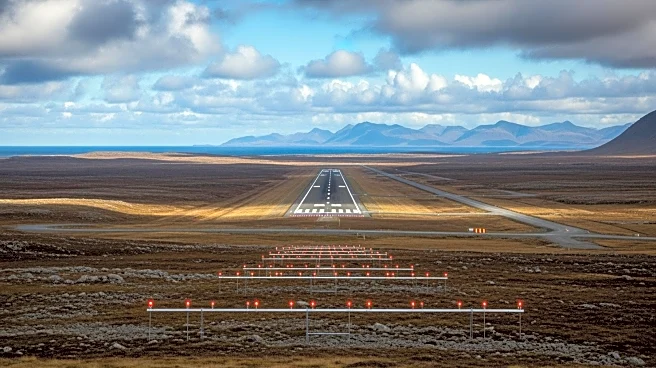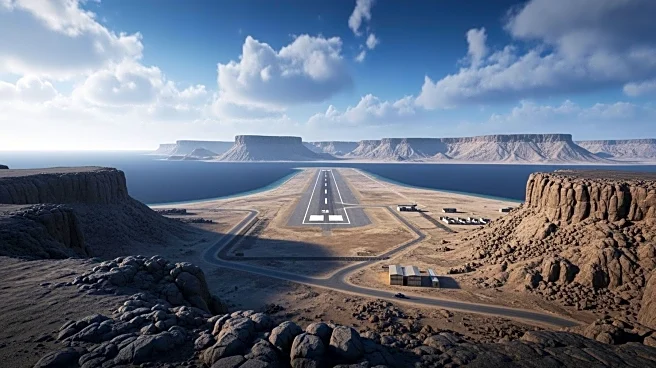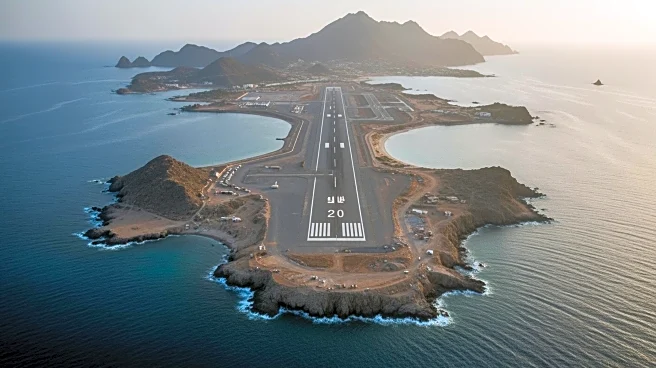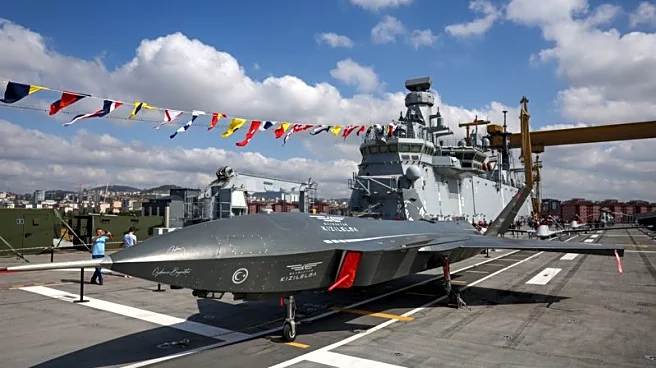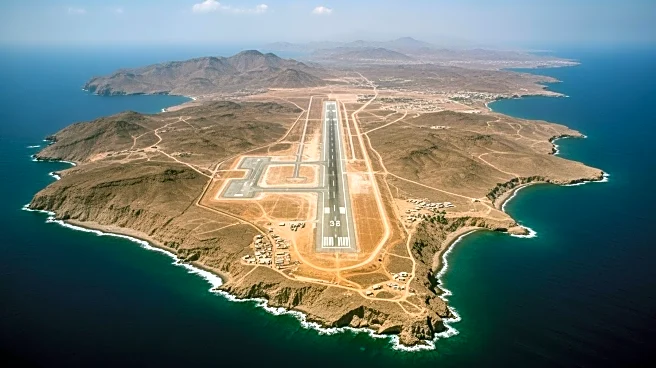What's Happening?
A new airstrip is being constructed on Zuqar Island in the Red Sea, off the coast of Yemen, as revealed by satellite images. This development is likely linked to forces opposed to the Iranian-backed Houthi
rebels. The airstrip could enhance military capabilities for aerial surveillance over strategic waterways, including the Red Sea, Gulf of Aden, and Bab el-Mandeb Strait. The United Arab Emirates, known for building runways in the region, has not commented on the project. The construction involves a nearly 2,000-meter runway, with work starting in April and continuing through October. The UAE has previously been associated with similar projects in Yemen, including runways in Mocha, Dhubab, and Mayun Island. The strategic location of Zuqar Island, historically contested, is crucial for monitoring Houthi activities, particularly smuggling operations.
Why It's Important?
The construction of the airstrip on Zuqar Island is significant due to its potential impact on regional security and shipping routes. The Red Sea and Gulf of Aden are vital for international trade, and the presence of a new airstrip could enhance surveillance and counter-smuggling operations against the Houthis. The UAE's involvement underscores its strategic interests in the region, particularly in supporting anti-Houthi forces. This development may alter the balance of power in Yemen, where the conflict has been largely static. Enhanced surveillance capabilities could lead to more effective interdiction of weapons shipments to the Houthis, potentially reducing their operational capacity. The airstrip also reflects broader geopolitical dynamics, with the UAE and Saudi Arabia playing key roles in the conflict against the Houthis.
What's Next?
The completion of the airstrip may lead to increased military operations in the region, particularly targeting Houthi smuggling routes. Anti-Houthi forces, backed by the Saudi-led coalition, could leverage the airstrip for coordinated efforts against the rebels. However, the fragmented nature of these forces may limit immediate large-scale offensives. The UAE's continued investment in infrastructure projects in Yemen suggests a long-term strategic commitment to countering Houthi influence. International stakeholders, including the U.S. and Israel, may continue to monitor developments closely, given the implications for regional security and shipping lanes. The airstrip could also serve as a base for future operations, depending on the evolving political and military landscape in Yemen.
Beyond the Headlines
The construction of the airstrip raises questions about the ethical and legal dimensions of foreign involvement in Yemen's conflict. The UAE's role in building military infrastructure in a sovereign nation highlights issues of territorial integrity and international law. The long-term presence of foreign forces may affect Yemen's sovereignty and its ability to govern independently. Additionally, the focus on countering smuggling activities underscores the complex nature of the conflict, where economic interests intersect with military objectives. The airstrip could also influence cultural dynamics, as increased foreign presence may impact local communities and their way of life. The broader implications for regional stability and international relations remain uncertain, as stakeholders navigate the delicate balance between security and sovereignty.
